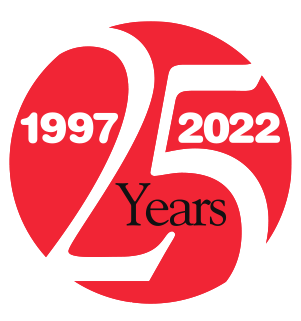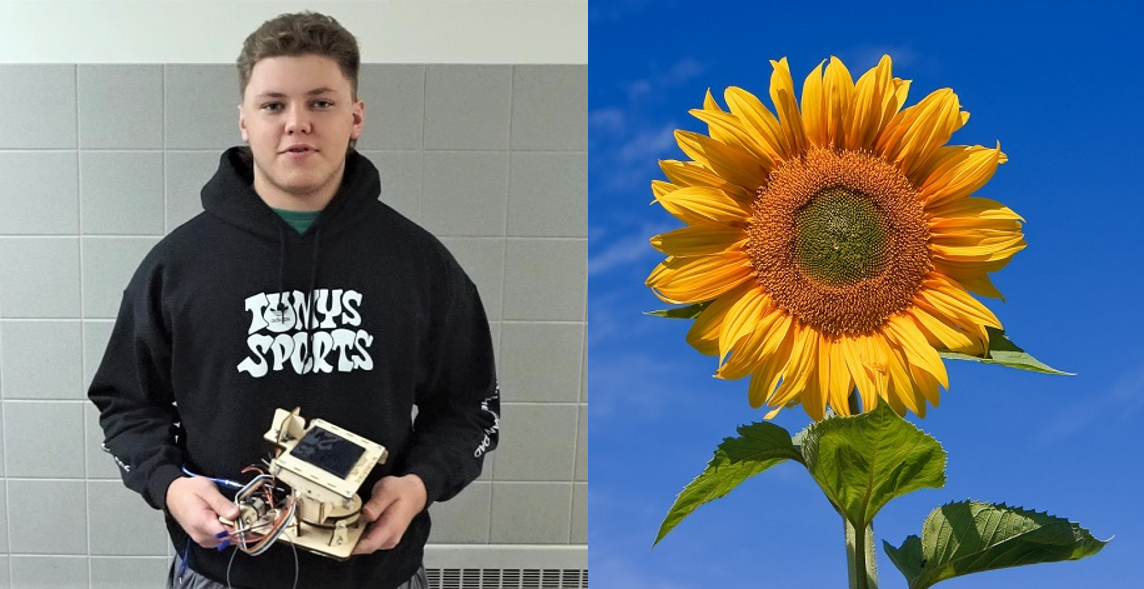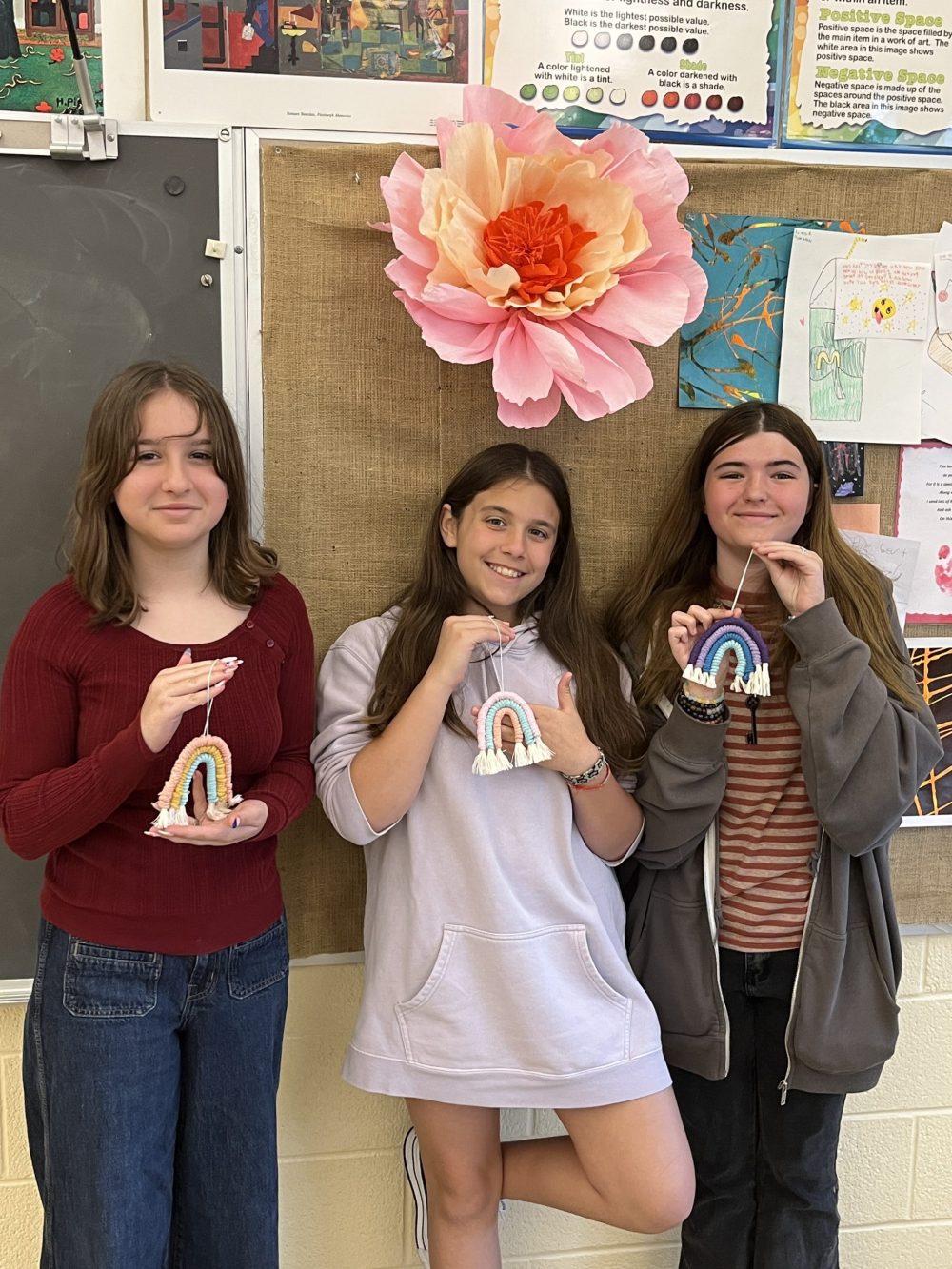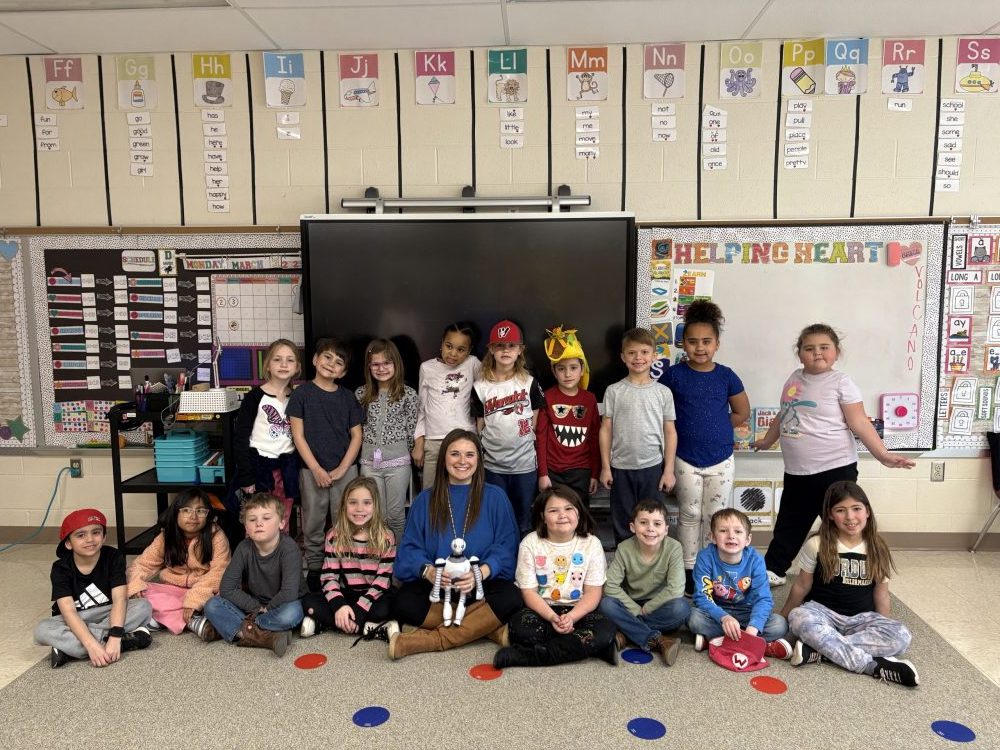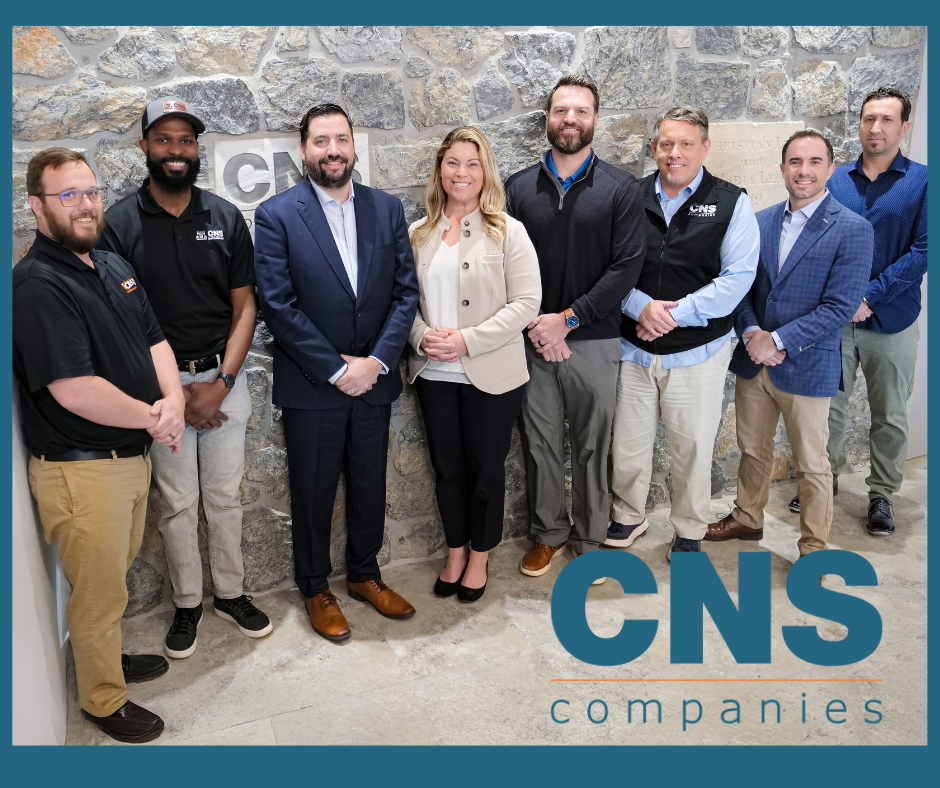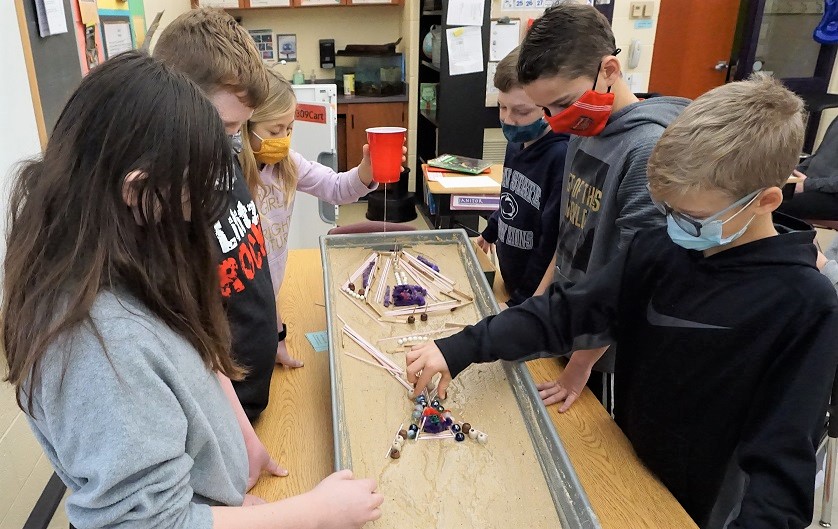
Want to prevent Lititz Run erosion? Start with fifth-graders
April 1, 2021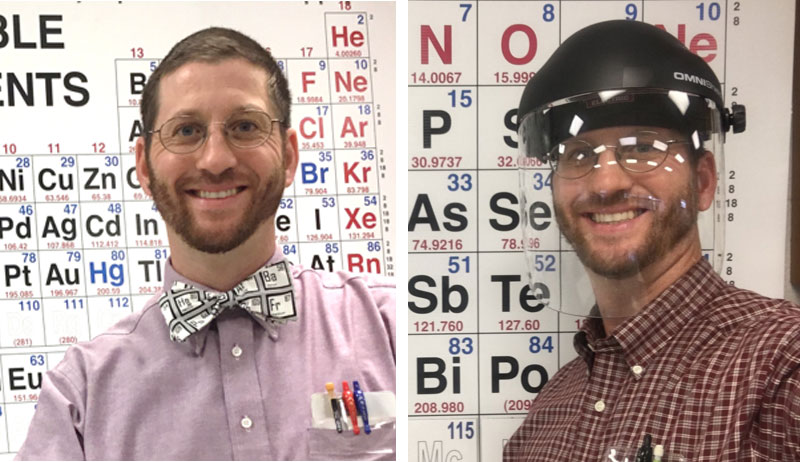
Doug Balmer: putting a smile in Warwick chemistry
June 1, 2021Let’s follow the sun
In Honors Astronomy, OT Nolan Rucci makes a solar panel operate like a sunflower.
In the natural order of things, trees and plants, astronomers and football players, all grow toward our nearest star. A field of young sunflowers will turn their heads during the night so they’re facing east to greet the morning sun, then follow the sun’s path throughout the day to catch the most direct rays. On a crowded shore in the middle of August, you can observe the same behavior among the beach umbrellas.
In the United States today, solar panels have surpassed windmills as a renewable energy source and now generate about 3% of America’s electricity. A solar farm the size of Idaho’s panhandle could produce 100%. If they all behaved like sunflowers or beach umbrellas, they’d be even more efficient at converting light energy into electricity.
Thanks to a grant from the Warwick Education Foundation, Honors Astronomy students like senior Nolan Rucci are now studying how this could work. We awarded their teacher, Sarah Martens, $954 to purchase 6 solar panel trackers.
![]() Each device is a bench-scale model of a double-axis solar panel tracker. Built-in sensors detect the direction of the light source and send an electronic signal to the twin motors, which instantly tilt the photovoltaic cell up or down, left or right. So as the sun moves across the sky on a particular day, the tracker adjusts the panel to follow it. A voltage meter displays how much electricity is being produced.
Each device is a bench-scale model of a double-axis solar panel tracker. Built-in sensors detect the direction of the light source and send an electronic signal to the twin motors, which instantly tilt the photovoltaic cell up or down, left or right. So as the sun moves across the sky on a particular day, the tracker adjusts the panel to follow it. A voltage meter displays how much electricity is being produced.
As Mrs. Martens’ students study how the stars, planets, and galaxies form and act, they learn how to make specific calculations. “The trackers let my students take what they learn in honors astronomy and apply it to a real-world situation. They figure out the altitude and azimuth of our sun for our latitude and time of year, then determine the best placement of a solar panel to get the maximum voltage.”
This kind of hands-on learning enables students to take classroom knowledge outdoors to conduct field experiments with instant feedback. Students also compare solar voltage on clear days versus cloudy days and during different months of the year.
“It’s really cool to be able to track the sun, take all this scientific data, and apply it to real-world challenges.”
-Nolan Rucci
Let’s say you’re putting a few solar panels on your roof. Fixed-position panels are currently more practical for residential use. Which direction should they face to generate the most electricity year-round?
When the Warwick astronomers take their trackers outside, says Martens, they can “determine the best placement of a solar panel that would be in a fixed position to get the most radiation absorption and the maximum voltage.”
 Like most of our supporters, you like to see how your giving makes a difference in the lives of Warwick students. Many fans of Warrior football know Nolan has been a stand-out at offensive tackle. He’s headed to the University of Wisconsin to play for the Badgers.
Like most of our supporters, you like to see how your giving makes a difference in the lives of Warwick students. Many fans of Warrior football know Nolan has been a stand-out at offensive tackle. He’s headed to the University of Wisconsin to play for the Badgers.
But Nolan is also an academic star. And who knows where he or any of Mrs. Martens’ astronomers will shine brightest in the years to come.
Right now, your giving is making an impact on their understanding of how sunlight is transformed into renewable energy. Don’t be surprised to see a Warwick graduate leading America into a new energy future. You can remember that it started with giving them a chance to follow the sun.

